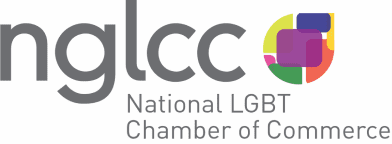By Sarah Jester
The data is in — the percentage of Americans that identify as part of the LGBTQ community has doubled over the last decade. This February, Gallup reported that LGBTQ individuals make up around 7.2% of the total U.S. population, with more and more Americans coming out and into their true selves. Around 8.8% of LGBTQ adults, or 0.6% of the total U.S. adult population, now identify as transgender, meaning as a gender identity that is different from their sex assigned at birth.
The term “transgender” also includes gender non-conforming and nonbinary identities. Gender non-conforming individuals express their identities in ways that do not abide by the gender binary, steering clear of traditional masculine and feminine norms. Nonbinary people sometimes disregard the gender binary entirely, falling somewhere outside or inside of that spectrum. At NGLCC, we use the phrase “transgender & gender expansive” (TGX) to encompass all identities that fall under the transgender umbrella. The best way to understand how a TGX individual identifies is to listen to how they define themselves and to have productive, respectful conversations about identity.
Over the last several years, nonbinary identities in particular have found their way to the top of the public consciousness. A curious effect of the COVID-19 pandemic was a perceptible shift in the way that individuals perceived their own gender identities. In October of 2020, I came out as nonbinary by writing the following:
**
After March of 2020, many of us found our lives permanently altered. Other than trips to the grocery store, we rarely interacted with large groups of people. Although this isolation bore many implications, perhaps an unexpected one related to gender expression. Popular sociological theories explain gender expression as a social performance. Based on cultural norms imparted to us at a very young age, every one of us “performs” aspects & ideals of masculinity or femininity in public. Quarantine presented an interesting scenario in which to observe this theory — what if the public settings where we perform gender were to be removed?
Through the last several months at home, I have found that although I was assigned female at birth, I have no inclination to perform traditional femininity – nor do I wish to perform traditional masculinity. I identify as nonbinary, lying somewhere outside of the traditional gender binary. These are not thoughts that surfaced merely because of a challenging quarantine. However, the removal of scenarios of gender performance helped me to sift through and clarify my own identity.
**
Unsurprisingly, Gallup reports that LGBTQ identification is more common in younger generations. Since the start of the pandemic in 2020, the Internet has been taken by storm by young people’s coming out posts on social media; androgynous, expressive haircuts & clothing; pronoun listings in both personal and professional social network biographies; and, as a result, the rise of “pronoun discourse.”
Conservatives have seized on this opportunity to bash LGBTQ people and inclusive practices. Many have denounced pronouns altogether, failing to realize that “he’s,” “she’s,” and “they’s” already populate their daily lives. The reality is that pronouns have existed since the advent of language itself, and anyone would be hard-pressed to navigate a day without using a single pronoun, regardless of their orientation on the political spectrum.
During Transgender Day of Visibility, I’m reflecting on what my pronouns mean to me three years after coming out as nonbinary. Pronouns mean visibility. Opportunity. Community. Comfort. Insight. As a deeply androgynous person, I appreciate the flexibility that “they/them” pronouns offer me as I make decisions on how to present myself to the world each day. I feel an automatic kinship with people that ask me to share my pronouns with them, or when I meet someone who uses the same set of pronouns as I do.
With more and more states proposing anti-transgender and anti-LGBTQ legislation, I applaud my transgender and gender-expansive peers who have been brave enough to be visible and be themselves in the face of hatred and bigotry. I encourage TGX NGLCC members seeking support during these times to connect with the NGLCC Transgender & Gender Expansive (TGX) Initiative for resources and community. And lastly, I call on allies of the LGBTQ community to get vocal. Even the smallest acts, like sharing your pronouns in your next work meeting or in your Zoom name, make a difference for the most marginalized groups among us. Together, we can make our nation a safer place for TGX individuals to live, work, and love.
**
As the Senior Manager of Digital Media at NGLCC, Sarah Jester works to create dynamic digital content to connect NGLCC with its audience and NGLCC members with each other. Sarah graduated with their B.A. in Political Communication from George Washington University, and is currently obtaining their M.A. in Media & Strategic Communication.
